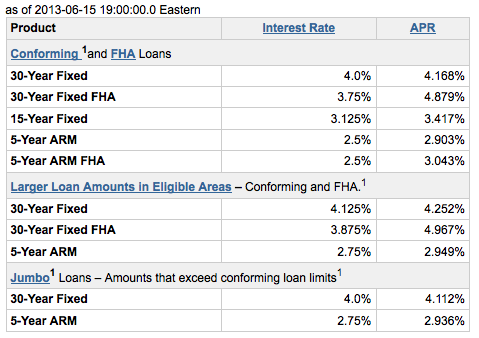Contents:
An ordinary annuity is a series of equal payments made at the end of each period over a fixed amount of time. Perhaps you own a fixed annuity that pays a set amount of $10,000 every year. The terms of your contract state that you will hold the annuity for 7 years at a guaranteed effective interest rate of 3.25 percent. You’ve owned the annuity for five years and now have two annual payments left.
- Compare personal loan rates from top lenders with no impact to your credit score.
- It takes into account the amount of money that has been placed in the annuity and how long it’s been sitting there, so as to decide the amount of money that should be paid out to an annuity buyer or annuitant.
- Use this calculator to figure out what a future income stream is worth in today’s dollars – whether it is from an annuity, business, real estate, or other assets.
- Discover the scientific investment process Todd developed during his hedge fund days that he still uses to manage his own money today.
- Present value calculations can also be used to compare the relative value of different annuity options, such as annuities with different payment amounts or different payment schedules.
An annuity table uses the discount rate and number of period for payment to give you an appropriate factor. The formulas described above make it possible—and relatively easy, if you don’t mind the math—to determine the present or future value of either an ordinary annuity or an annuity due. Financial calculators also have the ability to calculate these for you with the correct inputs. Similarly, the formula for calculating the present value of an annuity due takes into account the fact that payments are made at the beginning rather than the end of each period. In contrast to the future value calculation, a present value calculation tells you how much money would be required now to produce a series of payments in the future, again assuming a set interest rate.
The revised present value factors apply to survivor reductions or employee annuities that commence on or after October 1, 2021. More information and documentation can be found in our developer tools pages. These tools are designed to help you understand the official document better and aid in comparing the online edition to the print edition. This table of contents is a navigational tool, processed from the headings within the legal text of Federal Register documents. This repetition of headings to form internal navigation links has no substantive legal effect.
Present value of an annuity due table | Present value table
She is a Certified Educator in Personal Finance with FinCert, a division of the Institute for Financial Literacy, and a member of the Association for Financial Counseling & Planning Education . Discover the scientific investment process Todd developed during his hedge fund days that he still uses to manage his own money today. It’s all simplified for you in this turn-key system that takes just 30 minutes per month. A research project to develop an actuarial framework that could be used by employers and employees to assess defined contribution retirement plan benefits. Quickly calculate and output metrics on more than 1,200 U.S. multiemployer pension plans. The MPM Calculator can output the previous benefit cost , previous benefit cost ratio , and other defined metrics.

These reviewers are industry leaders and professional writers who regularly contribute to reputable publications such as the Wall Street Journal and The New York Times. Managing editor Emily Miller is an award-winning journalist with more than 10 years of experience as a researcher, writer and editor. Throughout her professional career, Emily has covered education, government, health care, crime and breaking news for media organizations in Florida, Washington, D.C. Use knowledge and skills to manage financial resources effectively for a lifetime of financial well-being.
She holds a Bachelor of Science in Finance degree from Bridgewater State University and helps develop content strategies for financial brands. The profitability index is a technique used to measure a proposed project’s costs and benefits by dividing the projected capital inflow by the investment. The offers that appear in this table are from partnerships from which Investopedia receives compensation. Structured Settlement Protection Act Passed in 1997, these state-defined laws originated in Illinois and regulate the secondary market. This can give you a starting point when considering whether to sell your annuity.
Present Value Annuity Factor
The annuity table consists of a factor specific to the series of payments an investor is expecting to receive at regular intervals and a particular interest rate. The number of payments is on the y-axis, and the rate of interest, or the discount rate, is on the x-axis. The intersection of the number of payments and the discount rate presents a factor that is multiplied by the value of payments, providing the present value of the annuity. Calculating the present value of an annuity can help you determine whether a lump sum payment or future annuity payments spread out over years will be more beneficial to your financial needs or goals. A present value annuity table allows you to estimate the present value of an annuity quickly.
There are several ways to measure the cost of making such payments or what they’re ultimately worth. Here’s what you need to know about calculating the present value or future value of an annuity. You might want to calculate the present value of the annuity, to see how much it is worth today. The interest rate can be based on the current amount being obtained through other investments, the corporate cost of capital, or some other measure. Future value is the value of a current asset at a future date based on an assumed rate of growth over time. The most common values of both n and r can be found in a PVIFA table, which immediately shows the value of PVIFA.
When the payments are fixed, the present value interest factor of an annuity — these are the values that correspond to the intersection of the number of payments remaining and the interest rate — can be simplified. The time value of money states that a dollar today is worth more than it will be at any point in the future. It makes sense when you consider that every dollar has earning potential because it can be invested with the expectation of a return. So, if you have $1,000 right now, and you put it in a high-yield savings account with a 1 percent annual percentage yield , at the end of a year, you will have $1,010. Our expert reviewers hold advanced degrees and certifications and have years of experience with personal finances, retirement planning and investments. Kim Borwick is a writer and editor who studies financial literacy and retirement annuities.

If you want to compute today’s present value of a single lump sum payment in the future than try our present value calculator here. This notice is necessary to conform the present value factors to changes in the economic and demographic assumptions adopted by the Board of Actuaries of the Civil Service Retirement System. You can then look up the present value interest factor in the table and use this value as a factor in calculating the present value of an annuity, series of payments. An ordinary annuity makes payments at the end of each time period, while an annuity due makes them at the beginning. You can use a present value calculation to determine whether you’ll receive more money by taking a lump sum now or an annuity spread out over a number of years.
Formula and Calculation of the Present Value of an Annuity
For example, you’ll find that the higher the interest rate, the lower the present value because the greater the discounting. The software was developed as a pedagogical tool to help demonstrate the impact of a change in Retirement Income strategy on potential financial outcomes. A user can consider various strategies of longevity and asset performance risk transferal and observe the resulting changes on a range of modeled outcomes. Until the ACFR grants it official status, the XML rendition of the daily Federal Register on FederalRegister.gov does not provide legal notice to the public or judicial notice to the courts.
For example, using Excel, you can find the present value of an annuity with values that fall outside the range of those included in an annuity table. Figuring the present value of any future amount of an annuity may also be performed using a financial calculator or software built for such a purpose. The future value of an annuity is the total value of payments at a specific point in time. Recurring payments, such as the rent on an apartment or interest on a bond, are sometimes referred to as “annuities.” The cell in the PVIFA table that corresponds to the appropriate row and column indicates the present value factor.
The President of the United States issues other types of documents, including but not limited to; memoranda, notices, determinations, letters, messages, and orders. Where i is the interest rate per period and n is the total number of periods with https://1investing.in/ compounding occurring once per period. The user should use information provided by any tools or material at his or her own discretion, as no warranty is provided. Using either of the two formulas below will provide you with the same result.
This would aid them in making sound investment decisions based on their anticipated needs. However, external economic factors, such as inflation, can adversely affect the future value of the asset by eroding its value. An annuity is a financial product that provides a stream of payments to an individual over a period of time, typically in the form of regular installments.

For example, ABC Imports buys a warehouse from Delaney Real Estate for $500,000 and promises to pay for the warehouse with five payments of $100,000, to be paid at intervals of one payment per year; this is an annuity. The future value of an annuity is the total amount of money that will build up over time, including all payments into the annuity present value annuity factor table and compounded interest over its lifetime. Present value calculations are influenced by when annuity payments are disbursed — either at the beginning or the end of a period. According to the Internal Revenue Service, most states require factoring companies to disclose discount rates and present value during the transaction process.
Annuity.org Launches Podcast: Exploring the Path to Financial Freedom
This variance in when the payments are made results in different present and future value calculations. It’s important to note that the discount rate used in the present value calculation is not the same as the interest rate that may be applied to the payments in the annuity. The discount rate reflects the time value of money, while the interest rate applied to the annuity payments reflects the cost of borrowing or the return earned on the investment. The discount rate reflects the time value of money, which means that a dollar today is worth more than a dollar in the future because it can be invested and potentially earn a return.
For example, if the $1,000 was invested on January 1 rather than January 31 it would have an additional month to grow. An annuity due, you may recall, differs from an ordinary annuity in that the annuity due’s payments are made at the beginning, rather than the end, of each period. David Kindness is a Certified Public Accountant and an expert in the fields of financial accounting, corporate and individual tax planning and preparation, and investing and retirement planning. David has helped thousands of clients improve their accounting and financial systems, create budgets, and minimize their taxes.
